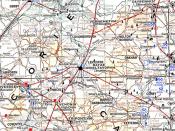1. EXECUTIVE SUMMARY The following report is based on a thorough analysis of a very critical issue within the Maritime Industry and specifically Maritime Law.
As we are all aware from life, almost everything moving within land, air or sea sometimes collides with something else. At sea therefore, most of the times due to negligence, vessels from centuries back are involved in collisions. No matter how automated and computerized voyages of vessels become daily, the critical element of human fallibility will always exist and will be the primary case of collisions in navigable waters.
We will examine now all legal aspects for collisions and liability and how they are applied within the English Admiralty.
---------- 2. INTRODUCTION The Marine industry goes back long ago to ancient times. In about 300 B.C the Ancient Greeks formed a certain system of maritime courts and law, which originated in the Island of Rhodes and it was the same with the maritime law of the Roman Republic.
However, both in Ancient Greece and Rome there was no law of collision. The first known written Roman law on collision was the "Lex Aquilia"� but the oldest known statement of marine collision law can be found in "Rhodian Sea Law"�, the maritime code of the later Roman Empire. There were many maritime codes in later years. Some of them, dealing with collisions in the Mediterannean sea countries were The Constitutum Usus of Pica (c. 1160), the Statutes of Ancona (c. 1350), the Consolato del Mare.
In this report we will talk about multiple collisions and liability dealt by the English Admiralty.
Although it is accepted that 1360 is the founding date of the High Court of Admiralty, records can only be obtained from 1530 regarding collision cases. After 1530 the history of collision law...


